The Athens Marathon is like no other on Earth. According to Greek legend, it covers the same ground that the Athenian messenger Phiedippides ran when he brought news of Athenian victory over the Persians at the battlefield of Marathon to the Acropolis in 490 BC. When you run the Athens Marathon, you run in the very footsteps of the ancients that gave birth to western civilization.
The Athens Marathon 26.2 miles is run entirely on asphalt and is recognized as close to the original marathon course that is possible 2,500 years after the event. The first twelve kilometers traverse the plain of Marathon where the ancient battle occurred and is just above sea-level. The middle nineteen kilometers are up a very long hill. The final eleven kilometers are rolling downhill through the city of Athens. The finish line is in Athens’ magnificent Panathinaikon Olympic Stadium, the birthplace of the modern Olympic Games in 1896 and held again in 2004.
Having run the Athens Marathon I can say it was the toughest marathon course I’ve run and the whole trip was an experience I’ll never forget!
I started my Athens trip by flying via Reno/San Francisco/London to Vienna, Austria, where I stayed with family friends for five nights. Vienna is very runner-friendly with large parks and trails along the Danube River where I completed my last two training runs in preparation for the marathon in Athens. It was a great place to get over jet-lag while enjoying the fine cuisine and wine, touring the museums and palaces, and attending a Viennese concert. Then it was on to Greece!
Athens is just one time-zone farther east than Vienna so the jet-lag was nothing compared to being on the move for over 30-hours from Reno! I met my marathon tour group of 65 runners at the airport and we drove over to our Athens home-base, the Amarila Hotel in the Aegean resort town of Vouliagmeni. Apostolos Greek Tours caters only to marathon runners and made everything from guaranteeing marathon entry, handling all transfers and guided tours, coordinating most meals, etc., so much less to worry about. If you ever want to run Athens, I highly recommend them!
After spending two days touring Athens, including hiking around the Acropolis and Panathinaikon Olympic Stadium (where the marathon ends), museums, enjoying the sidewalk cafes and stores in the Plaka, picking up our race bib packets at the marathon expo, and having a pasta pre-run dinner party, it was time for the race on Sunday, November 12th!
The Athens Marathon didn’t start until 9:00 a.m. so it was nice to not have to get up in the middle of the night to make it to the starting line. The warm-up area and starting line are the same used in the 1896 and 2004 Olympic Games and it was well equipped to handle the 20,000 runners. The vast majority of the runners were Greek, but I heard English, French, German, Polish, Russian, Italian, Chinese, Japanese and many other languages as we lined up. The conditions were relatively warm for November, with a temperature of about 72 degrees.
They had the Olympic flame burning for us at the starting line (closest we mere mortals will ever get to the real thing!). The race started in about five waves, separated by about five minutes. My training had gone really well for this marathon and I felt fit and ready to roll!
The first three-miles of the course were pancake-flat as we were heading across the plain of Marathon. The course takes a sharp left turn off the main highway and circles the burial mounds containing the Greek hoplite soldiers who died in the battle of Marathon in 490 BC. The wave I was running in was still pretty packed and I think most of the runners around me didn’t even glance up at the big burial mounds. I asked a Greek guide later on where they buried the Persians that died in the battle and they said that they were left in the open for the dogs to eat. Yikes!
I have to say that the asphalt roads we ran on were in excellent condition, so twisting an ankle in a pothole wasn’t too much of a concern. But it was relatively muggy and felt warm for a late fall marathon. There were also not as many aid stations as we have in most US marathons, but they handed out bottles of water instead of cups so hydration wasn’t a problem if you carried it with you for a while.
The first half of the course was somewhat rural so there were not a lot of spectators unless you were passing through one of the small Greek towns, and then they were quite vocal as we came by. I was wearing both Greek and American flags on my royal blue race shirt above my race bib, and one of my most cherished memories will always be when spectators, especially the Greek kids, would see those flags and yell out “Bravo! Bravo! Amer-EE-Ka!
At about mile 9 you start up the first of the rolling hills that are the mountain spine of the peninsula that has Marathon on the east side and Athens on the west. I had been training for months running the hills west of Carson City, so I was feeling really good at this stage. But I was also reflecting about how much harder it would have been to cross this mountain range 2,500 years ago in the summer heat in 70-pounds of battle armor, wearing sandals, no modern fabrics or gear, and with no aid stations. No wonder Phiedippides died!
The long grind uphill from mile 9 to mile 21 was taking its toll on a number of the runners. Teams of two Greek EMTs/Paramedics were stationed along the course about every two miles and they all seemed very busy with heat exhaustion victims lying flat on their backs with ice packs on their heads.
At about mile 23 you crest the top of the range and start down a rolling descent through the urban canyons through the middle of Athens to the finish. I was staying well hydrated, but I found out just past the crest that I really should have been taking more salt/potassium because I got the first severe leg cramp I have ever gotten in nine marathons. Left inner thigh grabbing and screaming! I slowed some and quickly downed two salty GU gels (please, no more of those for at least another four months!) and within a third of a mile the cramp released and I was surprisingly fine the rest of the way to the finish.
In the final three miles the streets were pretty packed with spectators and you pass some beautiful monuments and buildings, including the US Embassy.
The final half mile goes down a narrowed tree-lined street adjacent to a park, and then you make the final left turn in view of the ancient Acropolis and into the Panathinaikon Olympic Stadium, a huge marble edifice built in 1896, but directly over the ruins of an older stadium built about 450 BC. If you don’t get tingles and tear up a bit running down the last straightaway to the finish then you don’t have a soul! As the Greeks say, “Opa!”
After finishing they offer you the typical post-race refreshments, but I particularly enjoyed getting the nice finisher’s medal which is in the shape of the stadium. Of the 65-marathoners in our group, everyone completed the race.
After fighting the Athens traffic and back at our hotel, there was nothing quite like wading into the cold Aegean Sea up to your race bib and soaking tired legs until they are numb!
Unless, of course, you count the post-race banquet and somewhat unlimited sampling of Greek wines!
After the marathon, I spent another week in Greece visiting a number of ancient sites, such as Olympia (birthplace of the first Olympics in 776 BC and where they still light the Olympic flame for all of the modern Olympics), Delphi, Epidavros, Sounion (temple of Poseidon), and cruised to the Aegean Islands of Hydra, Poros and Aegina.
Greece isn’t usually the first place people who go to Europe think of visiting, and they have more than their share of continuing economic problems, but I highly recommend you go. And I think I am hooked on doing destination-based touring, with a bucket-list marathon as the primary draw of the trip. But this begs a question? Where do you go to run a marathon that compares to the original one?!
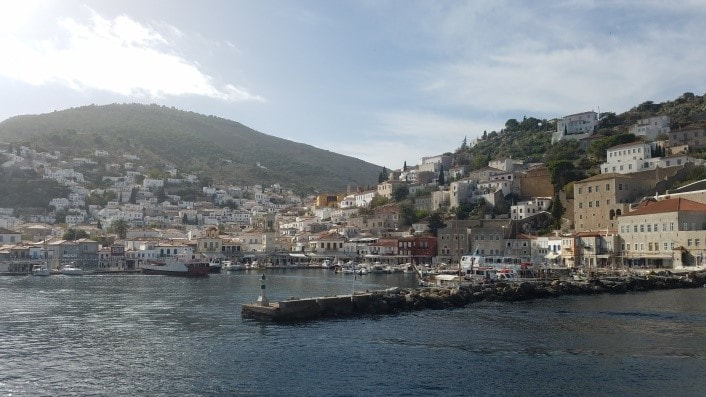
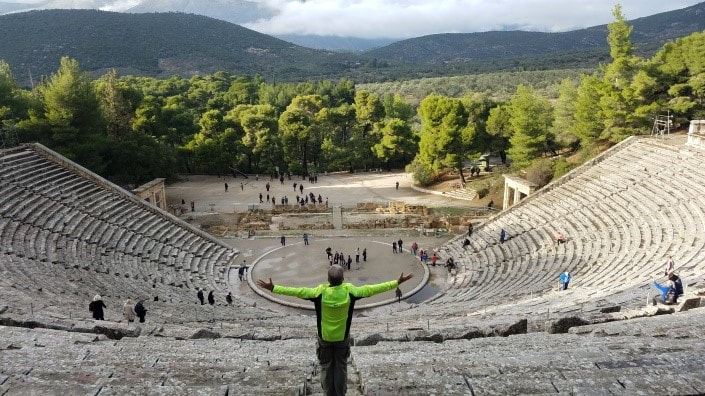
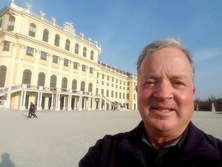
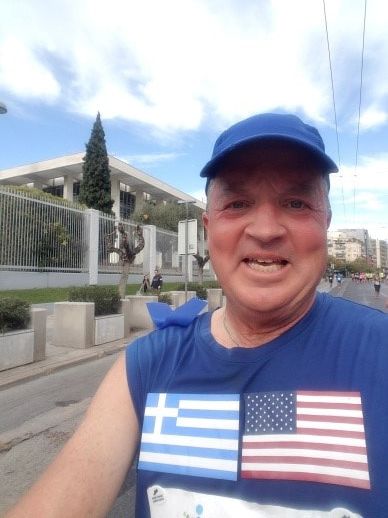
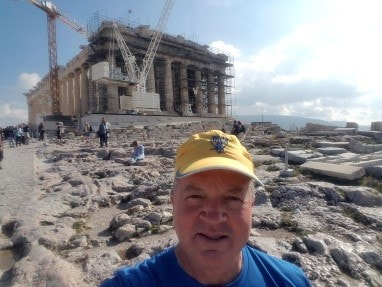
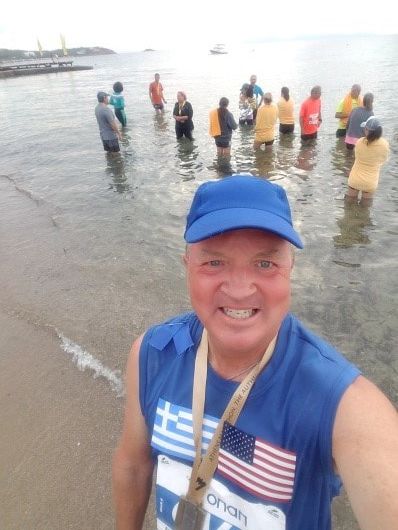
Leave a Reply